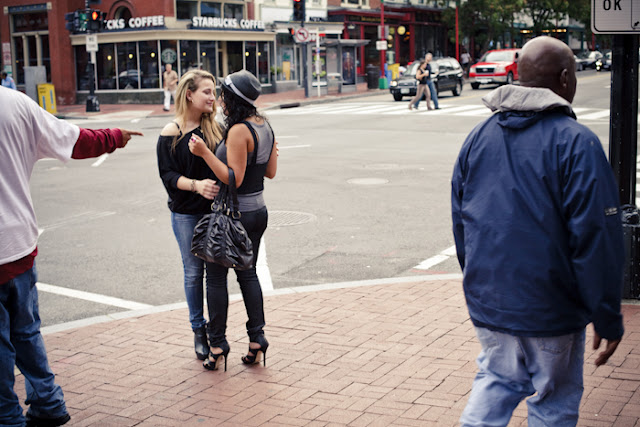When I photograph, I always ask myself, "what's so interesting about that?"
I thought this was interesting with the gentleman's head. I was going to just shoot the statue but I think this is better.
In this blog, I more or less investigate my fascination about photography. The camera is just a machine that does not have a mind, and millions of cameras are out there but when this is controlled by a human it takes on a different life as an artistic equipment, if one choose to.
When the photographer asks, "what's so interesting?" This question is really about what the photographer values. It doesn't have to be all that deep but it touches on what makes each one of us different. As artists, all we do is explore that difference.
Here, I surprised myself by using a very shallow depth of field and rendering the background into something abstract. I think a good picture happens when whatever the photographer thought was interesting is clearly communicated to the viewer. And this clarity is mixture of framing, lens selection and all that stuff we teach ourselves in photography. What's so interesting about a blade of grass? I thought this blade isolated in this manner with more jagged background gave an interesting balance between the two. If the background was in focus, then it would've taken attention away from the delicate blade.
What's so interesting about this? Oh you know...
The light bulbs interested me here. And the cool blue and warm pink was extra.
What I like is different than what you may like, so when we photograph, we'll come up with something different. This difference loosely defines style, I think.
I believe, that whatever you may think is interesting, you need to clarify that vision, and use all your resources to get that idea across. That would be a good photograph. You may not like it because of what ever reasons but a clearly stated photo with easy to understand vision is a good photograph.
I used to see other photographers' work and wonder why I couldn't do what they do? We have the same camera, so why not? The answer is because we are all different. Styles are established when we are comfortable with ourselves enough to say to others "Hey, this is what I thought it was interesting, so there!"





Thanks for this insight. I always thought that others were better photographers than me, but after reading this I realise that it's the individual's style and vision that makes their photographs stand out. Now I will go and take what I want to get across instead of tryignt o emulate others work.
ReplyDeleteThat's great Belinda! We all have our own vision, and that's what we have to hone. Having said that, we can learn by copying others' work too. Mostly technical skills, but a lesson is a lesson.
ReplyDelete